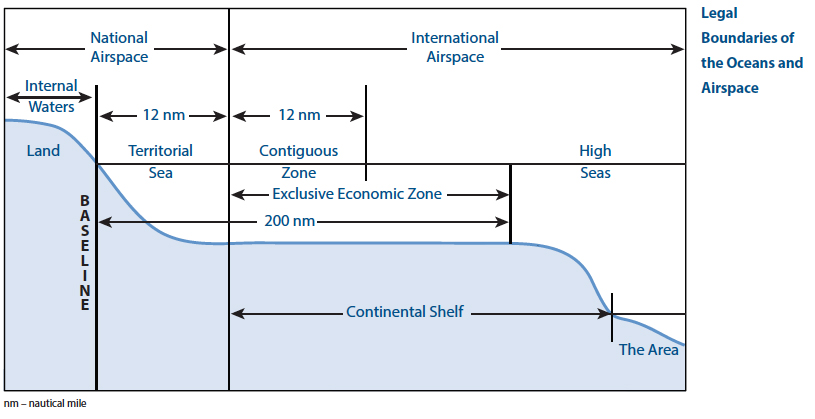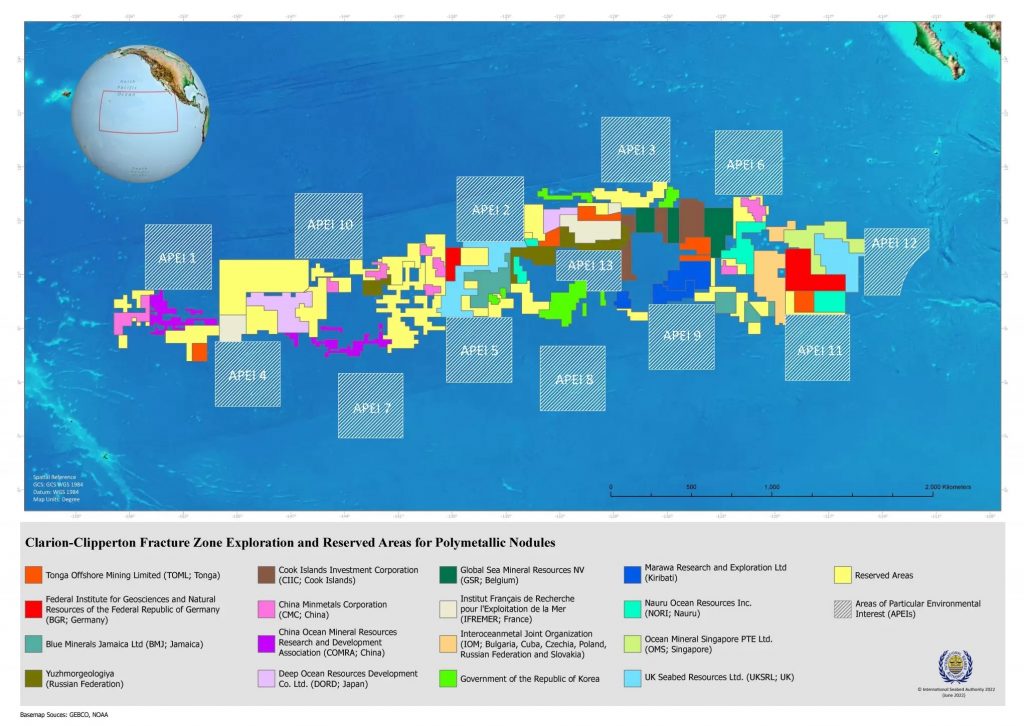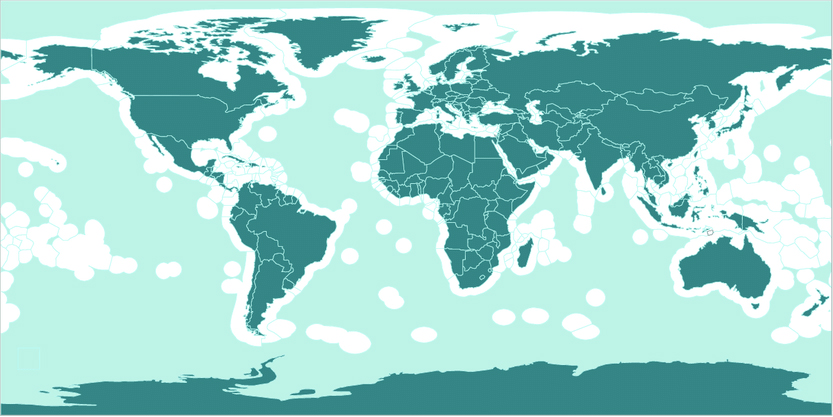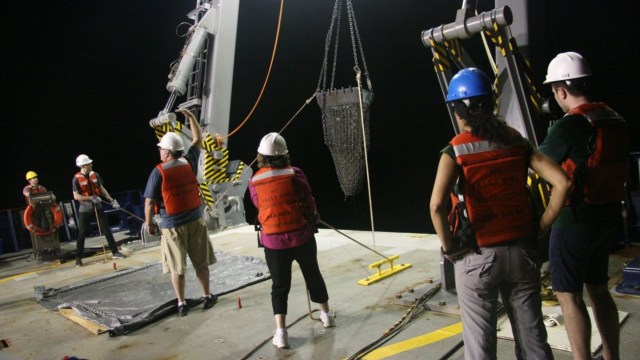Written by: Gabriella Alodia, Ph.D.
Lecturer and Researcher in Hydrography Research Group
Faculty of Earth Sciences and Technology, Institut Teknologi Bandung
When we talk about natural resources in the seas, we mainly talk about those situated in our own territorial waters. How about the high seas? Are we ready to discuss the potential of natural resources outside of our own playground? According to the International Seabed Authority (ISA), there are still around 54% body of waters in the world that has no jurisdiction. This situation makes many countries compete to claim these ‘lawless’ areas, in which ownership has not yet been defined. The question would be, what has been going on in the high seas? What might we miss out?
The beginning of high seas exploration
The terminology of ‘high seas’ refer to all parts of the sea that are not included in the ‘exclusive economic zone (EEZ)’, in the ‘territorial sea’ or in the internal waters of a state, or in the archipelagic waters of an archipelagic state. In other words, no country can immediately claim ownership of an area if the area is situated in the high seas. Interest the high seas area was first expressed in the scientific expedition aboard a British Vessel, HMS Challenger, which took place from 1872 to 1876. During the expedition, the vessel sailed to various areas of the high seas, such as the Mariana trench in the western Pacific ocean, as well as the ridge that extends from the south to the north of the Atlantic ocean, also known as the Mid-Atlantic ridge.

The legal boundaries of maritime zones of the ocean and air space. Image courtesy of Tufts University, Law of the Sea: A Policy Primer, Chapter 2: Maritime Zones. Source: NOAA (2022).
On 7 March 1873, the scientific expedition reported indications of manganese oxide ore in one of the dredging results, as part of the activity carried out during the research period. Manganese ore itself is an important natural resource for industrial needs, especially in the production of steel, batteries, ceramics, and porcelain. Based on this pioneering discovery, between the 1960s and the 1970s, various countries in the world, including Germany, the United States, Canada, Japan, France, etc. began to form consortiums and held meetings related to the exploration and exploitation of natural resources in the high seas area. In response to these meetings, an international treaty titled the ‘United Nations Convention of the Law of the Sea’ was formed in 1982, later known as UNCLOS 1982. This treaty was created primarily to establish boundaries regarding ownership of the body of water in the world. This treaty was followed by the formation of the ISA in 1994, which was specifically tasked to regulate activities regarding exploration and exploitation of minerals in the high seas area, including the ownership and the impact of the activities on the environment.

HMS Challenger spent four years conducting scientific measurements around the world between 1872 and 1876. Image © The Trustees of the Natural History Museum, London (All Rights Reserved). Source: Natural History Museum UK (2022).
Who owns the high seas?
Up until now, there are at least 15 countries that have been carrying out mineral exploration, especially for manganese, in the high seas area. The current largest concession area, known as the Clarion-Clipperton fracture zone, is located in the Pacific ocean, approximately 1,500 km from the west coast of Mexico. The area covers more than 200 million hectares of seabed that has been and is being explored by various companies and organizations under the flags of Germany, China, Japan, Belgium, South Korea, France, Kiribati, Nauru, Singapore, Tonga, the United Kingdom, Russia, as well as affiliated countries in the Interoceanmetal Joint Organization (IOM) consortium, namely Bulgaria, Cuba, Czech Republic, Russia, and Slovakia.

The Clarion-Clipperton fracture zone exploration and reserved areas for Polymetallic Nodules. Source: ISA (2023).
Other than in Clarion-Clipperton fracture zone, exploration has also been and is being carried out at various potential zones in the Indian and Pacific oceans. However, according to the ISA, the area explored still covers merely 0.7% of the world’s high seas area. This made the remaining areas attractive, especially for countries registered as active members of the ISA.

World ocean jurisdiction map. White areas: Exclusive economic zones. Light green areas: High seas. Image courtesy of Sumaila et al. In prep./ Global Ocean Commission/ The High Seas and Us: Understanding the Value of High-Seas Ecosystems. Source: NOAA (2022).
In addition to its economic benefits, areas of manganese exploration turned out to be of interest for those focusing on marine biodiversity. While the people in the industry are competing to find potential areas for seabed mining, scientists are also competing to discover new species that have never been recorded in the history of human civilization. These two motives are strong reasons for the increasing number of countries in the world who got interested in carrying out various expeditions to various regions in the high seas.

Deep-sea dredging in the Equatorial Pacific during the Cocos-Nazca Scientific Cruise. Photo: Gabriella Alodia (2018).
High seas expedition: Are we ready?
As we have discussed, there are still a vast areas in the high seas that has not had any jurisdiction. This situation makes the high seas such an attractive areas for various expeditions, from scientific to industrial. High seas expeditions certainly cannot be separated from the competence of human resources and technological readiness of each country. Some countries even have to form consortium, such as the IOM, in order to strengthen various aspects that must be owned before actually carrying out expeditions, exploration, and later exploitation. These various activities needs to be based by a strong regulation as well as the security and safety of the people involved. Therefore, investments in the form of education and training for a number of highly potential citizens must be conducting, in line with technological investments.
Some of you might ask, why do we have to sail to the high seas if our territorial and EEZ is already large and remains merely explored? To answer this question, we need to reflect on several things. Are we really sure that the potential of natural resources in our seas is sufficient and suitable to meet the needs of domestic industry? What about the world’s needs? Do we have the courage to take part in meeting industrial needs that are wider than our own domestic needs?
This post is translated to English from this published article: Laut Lepas, Milik Siapa? | kumparan.com
